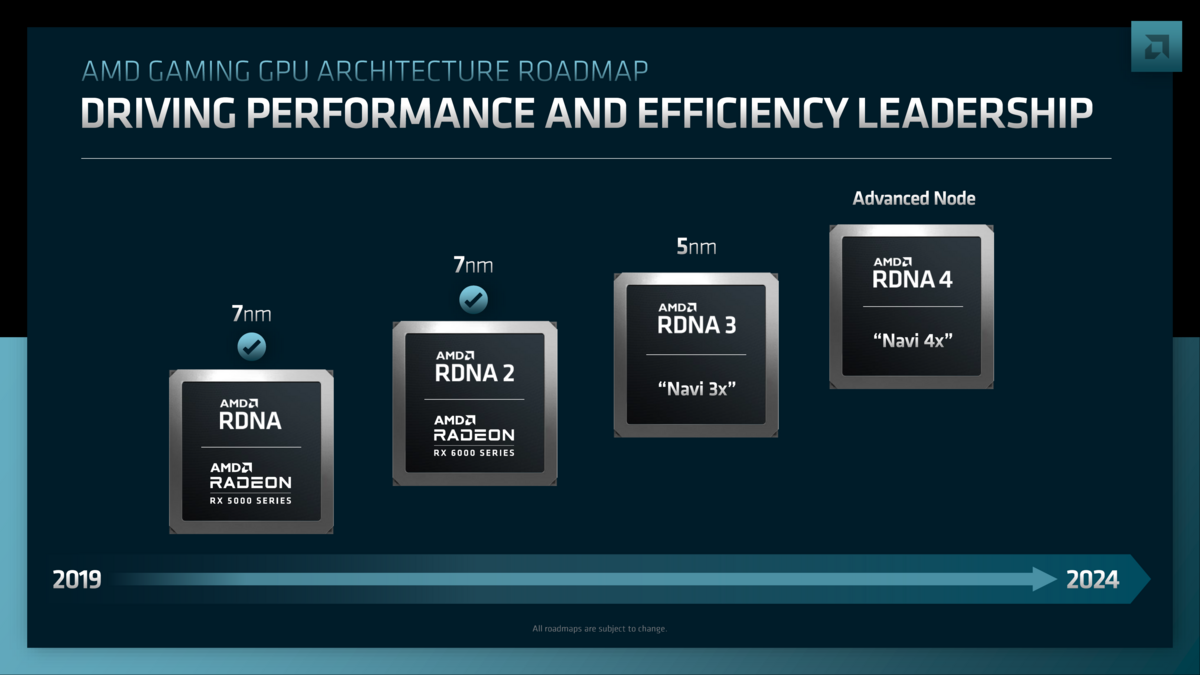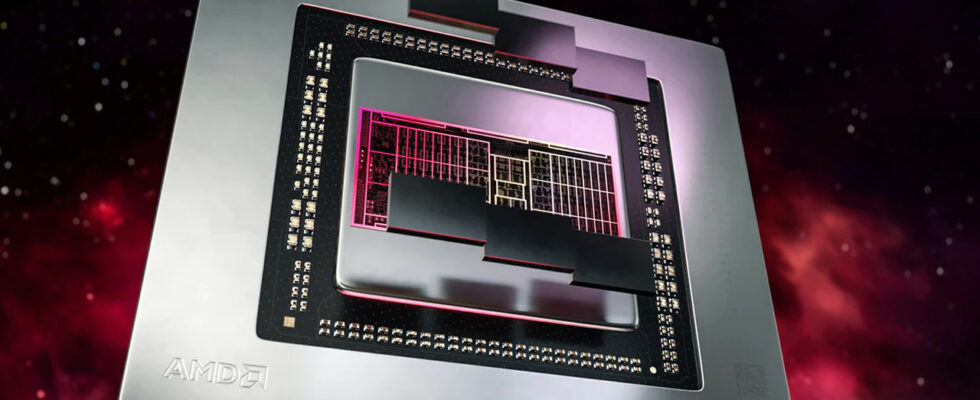Futures graphics cards RDNA 4 could skip the high end, but not ignore much better energy efficiency.
As is often the case, rumors surrounding the next generations of graphics cards tend to talk more about GeForce models, the GPUs designed by NVIDIA.
However, the latest one focuses more on the RDNA 4 architecture, which is designed by AMD and should equip Radeon RX 8000 cards which are expected for the end of 2024.
No 8900 XT/XTX coming?
Mentioned in June 2022, RDNA 4 remained very discreet throughout the past year with, however, an important rumor which emerged during the summer of 2023: what if AMD skipped the high-end?
While the bulk of sales are at the entry/mid-range, AMD could abandon the most powerful cards which mainly have a technological showcase side for manufacturers. An direction already taken by AMD when releasing RDNA 1, sometimes known as Polaris, and which makes sense as the firm increasingly highlights its APUs.
Today, a new rumor adds fuel to this previous information. Quoting Moore’s Law is Dead, our colleagues at TechPowerUp believe they actually know that the mid-range RDNA 4 would already have quite remarkable computing power.
TSMC N4 Process
It is obviously too early to have exact names, but Moore’s Law is Dead suggests that the most powerful reference in this future Radeon RX 8000 range would offer a level of performance comparable to that of the Radeon RX 7900 XTX.

The current high-end would therefore not be overwhelmed in terms of computing power, but this Radeon RX 8000 would be much more efficient. To achieve the same level of performance, it would require a much smaller amount of energy and – thanks to the move to a new method of manufacturing – it would also be much less expensive.
Still produced by TSMC, the RDNA 4 GPUs would use TSMC’s N4 process for much finer engraving, in 4 nm. Even if the Taiwanese founder charges more for its wafers, AMD would largely end up with better yields and much smaller GPUs… which would be able to offer more cores and computing units.
If all this is confirmed, the battle with NVIDIA’s Blackwell – more or less planned for the end of 2024 as well – would focus much more on the mid-range and it’s not the players who will complain about it.
Source : TechPowerUp

7